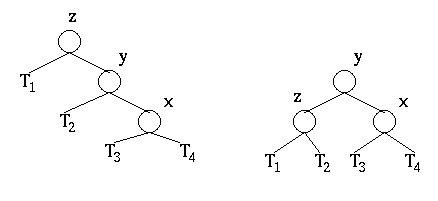- Basic operations
- Performance expectations
- Possible implementations
- Performance expectations
- Possible implementations

struct node{
DataType data;
node * parent, * leftChild, * rightChild;
};
Please continue on the other side
int foo(int x) {
if(x < 4) {
return x;
} else {
return( 2*foo(x/2) + 3*foo(x/4) + 3);
}
}
- Give the algorithm and name the sort.
- Describe how the sort works.
- Describe where the sort will work well and where it will not work well.
- Describe the performance characteristics of the sort.